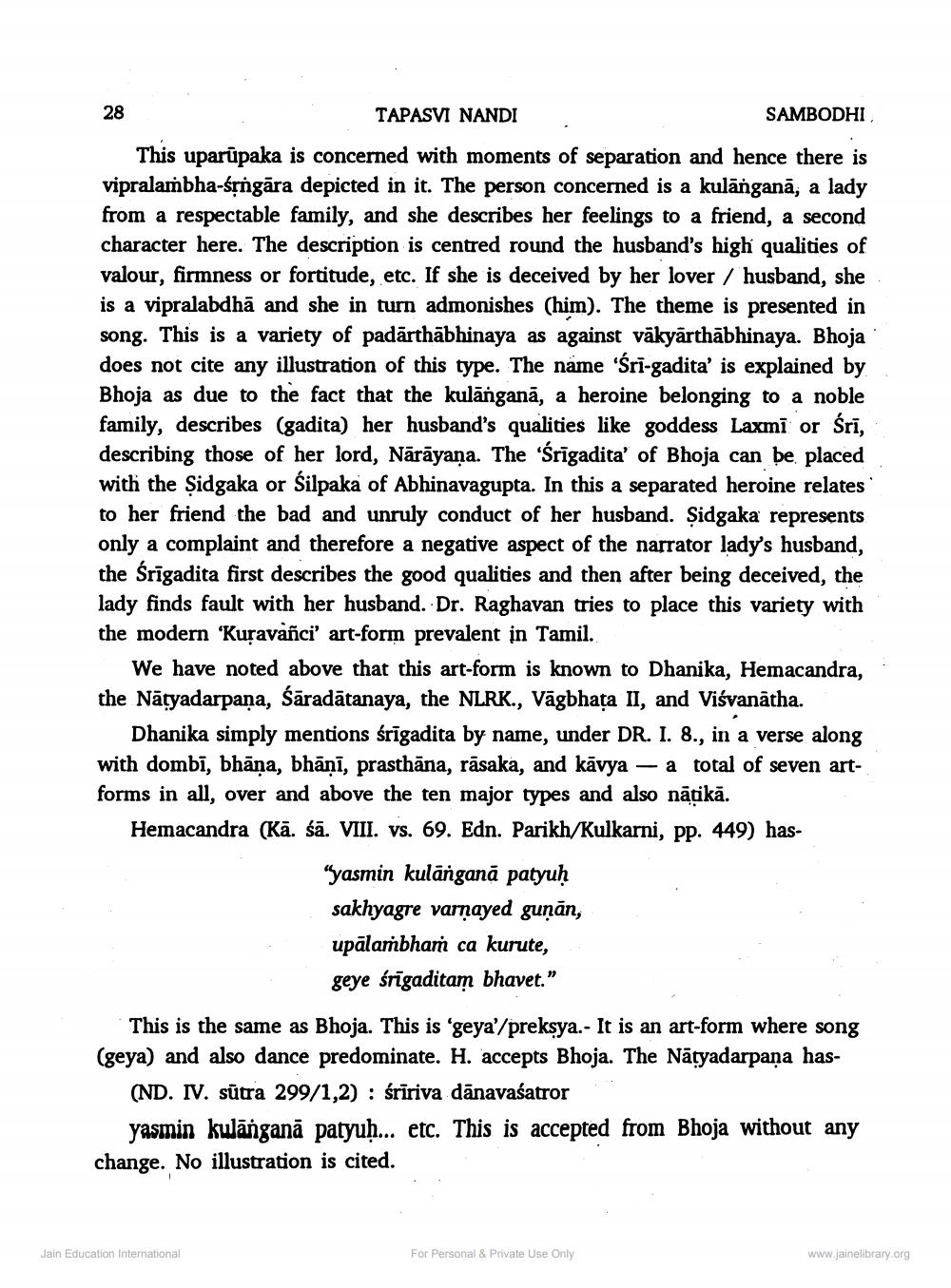________________
28
TAPASVI NANDI
SAMBODHI
This uparūpaka is concerned with moments of separation and hence there is vipralambha-śngāra depicted in it. The person concerned is a kulānganā, a lady from a respectable family, and she describes her feelings to a friend, a second character here. The description is centred round the husband's high qualities of valour, firmness or fortitude, etc. If she is deceived by her lover / husband, she is a vipralabdhā and she in turn admonishes (him). The theme is presented in song. This is a variety of padārthābhinaya as against väkyārthābhinaya. Bhoja does not cite any illustration of this type. The name 'Sri-gadita' is explained by Bhoja as due to the fact that the kulānganā, a heroine belonging to a noble family, describes (gadita) her husband's qualities like goddess Laxmi or Śrī, describing those of her lord, Nārāyana. The 'Srīgadita' of Bhoja can be placed with the Sidgaka or Silpaka of Abhinavagupta. In this a separated heroine relates' to her friend the bad and unruly conduct of her husband. Sidgaka represents only a complaint and therefore a negative aspect of the narrator lady's husband, the Śrīgadita first describes the good qualities and then after being deceived, the lady finds fault with her husband. Dr. Raghavan tries to place this variety with the modern 'Kuravañci' art-form prevalent in Tamil.
We have noted above that this art-form is known to Dhanika, Hemacandra, the Nātyadarpaņa, śāradātanaya, the NLRK., Vägbhata II, and Viśvanātha.
Dhanika simply mentions śrīgadita by name, under DR. I. 8., in a verse along with dombī, bhāna, bhānī, prasthāna, rāsaka, and kāvya - a total of seven artforms in all, over and above the ten major types and also nātikā. Hemacandra (Kā. śā. VIII. vs. 69. Edn. Parikh/Kulkarni, pp. 449) has
"yasmin kulāngană patyuḥ
sakhyagre varnayed guņăn, upālambham ca kurute, geye śrīgaditam bhavet."
This is the same as Bhoja. This is 'geya/preksya.- It is an art-form where song (geya) and also dance predominate. H. accepts Bhoja. The Natyadarpana has
(ND. IV. sūtra 299/1,2) : śrīriva dānavaśatror
yasmin kulānganā patyuḥ... etc. This is accepted from Bhoja without any change. No illustration is cited.
Jain Education International
For Personal & Private Use Only
www.jainelibrary.org




